The Hamada pistols were two of the few examples of Japanese military arms made by private companies rather than government arsenals. Hamada ran a shop making sporting arms before the war (and after), and converted his production to a .32ACP blowback pistol of his own design for the military to use. It was a successful project, and the result was a request to redesign it for the 8mm Nambu cartridge. After a few back-and-forth sessions with ordnance officers the new design was accepted and a separate factory outfitted to produce it.
Hamada pistols are very scarce today, as most of the 7.65mm ones appear to have been sent into China. The only surviving 8mm Hamada pistols known are in the white with serial numbers below 50, suggesting that they came from a preproduction batch. The regular ones appear to have been lost at sea in transit of destroyed by American bombing before being issued out to troops in the field.
I was able to take a look at examples of each type, and took these photos (click to enlarge):
7.65mm Hamada (aka, Type Hamada):
8mm Hamada (aka, Type 2):





























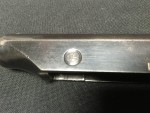



















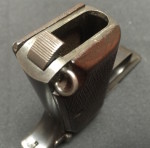

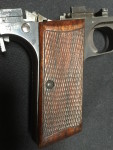
















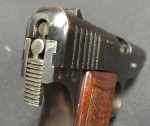

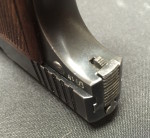





















































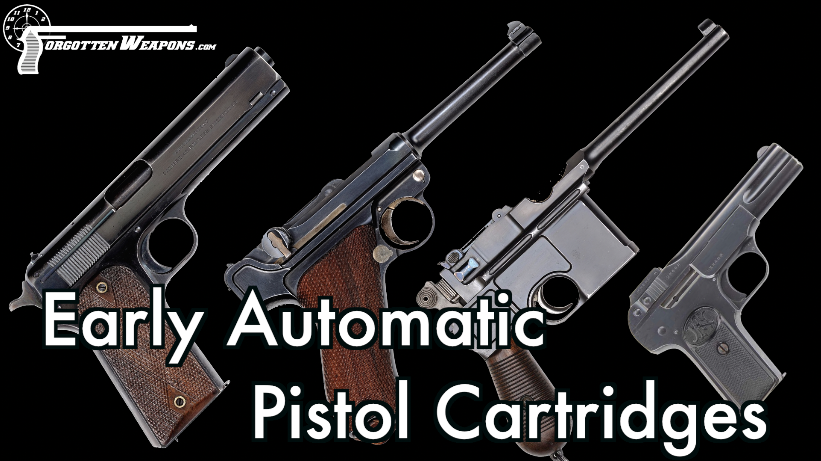
It would have been nice to have a fully assembled side view.
He did a video of this pistol not too long ago. Look it up, it shows you everything you want to see.
It would be even nicer not to complain!!!
“7.65mm Hamada (aka, Type Hamada):”
Clearly inspired aesthetic-wise by FN 1910 automatic pistol. Was some FN 1910 exported to Japan? If true: Was it used by Japanese officers? If true: was it liked or disliked?
And also if exported: when and how many examples?
Nobody knows since privately purchased side arms do not get registered… And besides, the records probably got burned…
There was one .32 FN 1910 with Japanese markings and Japanese made holster on RIA recently.
Japanese officers often bought quality commercial (imported) pistols for use as service sidearms. I don’t know about the FN M1910, but the DWM M1922/23 7.65mm copy of it, marketed from 1923 to 1931 (until a lawsuit by FN stopped it) was fairly common.
About 50,000 total were made, and it seems a respectable fraction of those ended up in Japan in officers’ holsters.
cheers
eon
When was it made? Did they have HSS tool bits? Inside of Slide looks like chewed up by mice.
Why make the bbl removable? It’s easily cleaned on the frame after the slide was removed. Not getting the reason for that detail.
Because the original model, Ortgies from which the dismount form borrowed had the same feature.
For multi caliber using perhaps. But fixed barrel should be more favorable at least for 8mm version which, by means, precluding the necessity of “Under Slide Lug” using for front guiding the slide reciprocal movement.
Denny, HSS toolbits do not make the job any smoother, it just means you can cut faster and do not have to fret so much over the flow of cutting oil. Also they are easier to sharpen. HSS was very much an Anglo-Saxon thing, like stainless steel, but I expect it was in use elsewhere by WW2. Difficult stuff to work, as it air hardens from a very high temperature (about 1600ºC) and then can whistand almost red heat without losing its edge (in theory). Scuffed milling can come from shards of metal adhering to the cutter (typical pain in the rear for soft aluminium), lack of rigidity somewhere, or a blunt edge. Milling anything tougher than mild steel, such as EN8 aka construction steel, requires dead sharp tools and a copious flow of soluble oil, that is why it’s convenient to “normalize” the steel beforehand, take it to cherry red heat, preferably in a reducing environment to avoid burning out the carbon, leave it thus for about an hour for every inch of thickness, and let it cool slowly in ash. This way the tensions and hardness will have gone out of the metal and it can be machined more easily and hardened and tempered without warping.
Here endeth the lesson, sorry folks but it’s something I am rather taken to.